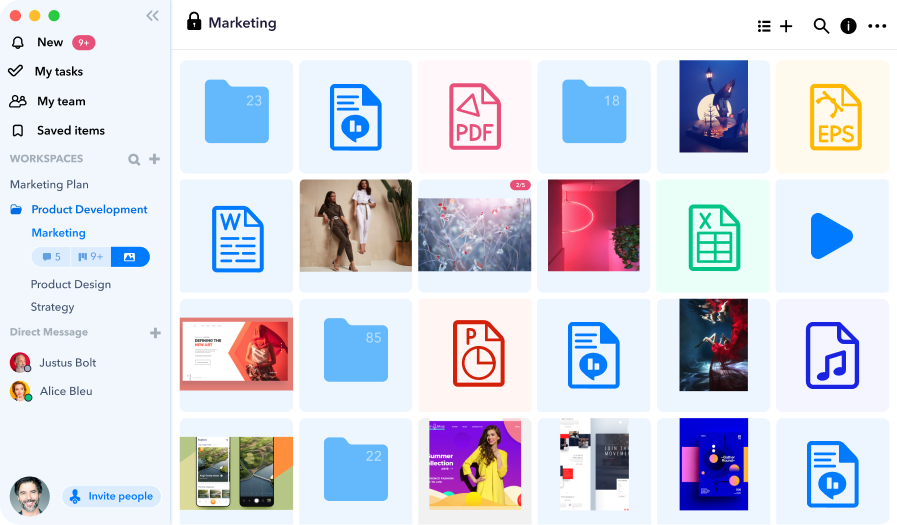Change is the only constant in the world. But when you’re managing work and people, you have to manage change to truly succeed.
Traditional project management methods are helpful, but if you want to stay flexible, there’s nothing like Agile and Scrum.
In this article, we’ll show you how to use Agile and Scrum project management to get your projects done in time.
Let’s dive in!
What Are Scrum and Agile Project Management Methods?

Before we get into the thick of it, it’s important to understand the difference between Scrum and Agile.
What Is Agile Project Management?
Agile was originally established as an approach to software development that prioritizes iterations and changes.
If you consider typical software development patterns, it’s clear that devs can’t plan out the entire project ahead of time. Things are bound to change, features have to be improved, and all of those changes have to be integrated into the end result.
This often leads to scope creep and other setbacks, especially if you’re using traditional project management techniques.
Conversely, The Manifesto for Agile Software Development demonstrates the framework managers need to use to successfully complete dynamic projects:
- Prioritizing individuals and interactions over processes and tools
- Prioritizing working software over comprehensive documentation
- Prioritizing customer collaboration over contract negotiation
- Prioritizing responding to change over following a plan
In short, Agile is more flexible than traditional project management methods.
It responds to change quicker, and uses iterations and knowledge to fuel project success.
What Is Scrum Project Management?
Now, Agile is a philosophy. But Scrum is an Agile methodology that helps you put Agile principles into practice.

In short, Scrum is a step-by-step road map for completing tasks and, consequently, projects.
Who Should Use Scrum, and What Are the Benefits?
Scrum is not for every team.
If you do repetitive work, then you might be better off using a different project management methodology.
However, if you often have to incorporate changes into your projects, refocus your priorities, and renegotiate changes and terms, then Scrum might just be a great fit.
Scrum can be used by the following teams:
- Engineers
- Software developers
- Marketing agencies
- Product development teams
And many more!
Just some of the benefits of using Scrum and Agile project management are:
- Improved product release and project completion rates
- Improved productivity, efficiency, and quality
- Improved team collaboration
- Improved client satisfaction
- Reduced costs
One of the main benefits of Scrum is flexibility.
Instead of spending a lot of time in the project initiation phase, the focus is on getting to work and planning on the go.
And with heightened client collaboration rates, Scrum improves client satisfaction and product quality.
How Does Scrum Work?
Because it’s flexible, Scrum can be customized to fit your team’s work style.
However, there are a few common terms:
- Sprints
Project work in Scrum takes place in Sprints.
A Sprint is a time-box that usually lasts between two weeks and one month. During each Sprint, the project team works on a particular set of contextually-connected features and/or tasks.

In the beginning, teams establish their Sprint goals. Then, they complete tasks relevant to established goals.
For example, if you were creating a marketing campaign for a client, you’d spend one Sprint planning online advertising. When that Sprint is done, you would focus on another aspect, such as content marketing.
- Sprint Backlog
Before Sprinting, you and your team have to create a Sprint backlog.
The Sprint backlog contains all the tasks that have to be completed during that particular Sprint.
Sprint backlogs help teams focus on tasks at hand. Ultimately, this approach significantly improves product quality.
For example, if your team was planning online advertising strategies for a client, your Sprint backlog would likely contain tasks such as: audience research, and ad creation.
It would not contain tasks relevant to other Sprints, such as website explainer video creation.
- Project Backlog
Your project backlog should contain all the tasks that have to be completed in order to wrap up the project.
In the beginning, you can brainstorm the tasks with your team and your clients.
However, as you start working in Sprints, you should carefully select and prioritize backlog tasks.
For example, you can’t really start working on an advertising campaign if you don’t understand the audience. Audience research would be a high-priority task, and you would address it in the first Sprint.
If other tasks pop-up during the Sprint, you should add them to the project backlog. This way, they won’t distract you, and you can address them after you finish the Sprint.
- Daily Scrum Meetings
Scrum teams hold daily Scrum meetings (also called stand-up meetings) to make sure the Sprint is progressing as planned. They shouldn’t last longer than 15 minutes.
Scrum meetings address:
- Progress updates
- Planned tasks
- Potential roadblocks

For example, you’d meet with your team, and then everyone would share what they did the previous day, and what they plan to do that day. Daily Scrum meetings are also a place to address concerns.
So if someone encountered a problem, they’d share it and you would work towards resolving it.
- Sprint Review
When the Sprint is done, you, your team, and the Product Owner should meet and review the work.
In addition to reviewing whether the end product of that Sprint meets the quality standards, Sprint review is also a good opportunity for retrospective. You and your team should discuss how to make the next Sprint even better.
- Different Scrum Roles
Finally, Scrum’s lingo is a lot more complicated than the methodology itself. Don’t let that put you off.
For each project, you should assign the following roles:
- A Product Owner – The person who has the final say regarding the project and the product
- A Scrum Master – The person who makes sure the team is following the Scrum rules and progressing as planned (i.e. project manager)
- Scrum team members
And now that we’ve covered the basics, it’s time to make your next project a resounding success with Scrum and heycollab!
How to Use heycollab for Scrum Project Management
- Set Up Your Scrum Board
One of the most important parts of the Scrum process is your Scrum board.
Scrum boards help you visualize work, i.e. tasks. Additionally, they make it easy to track progress and ensure the performance is up to standard.
Some teams like physical boards. However, team members can forget to update them. It’s much safer to go with a digital board.
heycollab project management workspaces include task boards.
Traditional Scrum boards are used for Sprint tasks. They consist of three columns:
- To do
- Doing
- Done
When a team member has completed their task, they can drag and drop it to the ‘done’ column.
You can also include columns such as:
- Resources
- Sprint backlog
- Quality check (Product Owner reviews tasks before marking them as ‘Done’)
- Product backlog (All the tasks that need to be completed in order to finish the product/project)
heycollab also helps you set due dates and priority levels for each task.
For example, Mary might have to complete three tasks, but one of them takes precedence. You can simply mark it as high priority in your heycollab Scrum board.
- Control the Sprint
Once you’ve identified Sprint priority tasks, you should make sure the Sprint is progressing as planned.
This is where team collaboration comes in.
As a project manager (i.e. Scrum Master), you have to help your team succeed.
Use heycollab’s team messaging and collaboration features to keep everyone on the same page.

If your team is hard at work, you can hold your daily Scrum meetings in heycollab team chat. Filter between group and individual discussions to make sure everyone is in the loop, and address issues before they’ve affected your project.
You can even report to clients by giving them Guest Access to relevant workspaces.
For maximum clarity, add files and documents to tasks and sub-tasks, and leave your feedback directly in the app.
- Improve Quality
Since you can leave feedback virtually everywhere in heycollab (team chat, task board, file storage), it’s easy to improve your project and product quality.
For example, if you were working on marketing materials with your team, you’d typically have to switch between different apps: InVision for visual feedback, Slack or email for discussing the details, and project management tools for adding other tasks.
With heycollab, you can give and get visual feedback, update your tasks, and discuss the details within the same app.

Ultimately, heycollab and Scrum make it easy to improve your productivity and amaze your clients!

